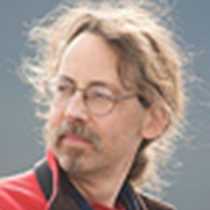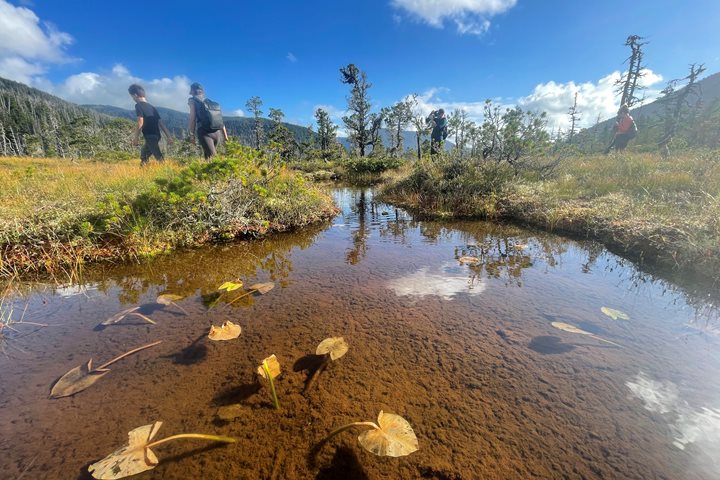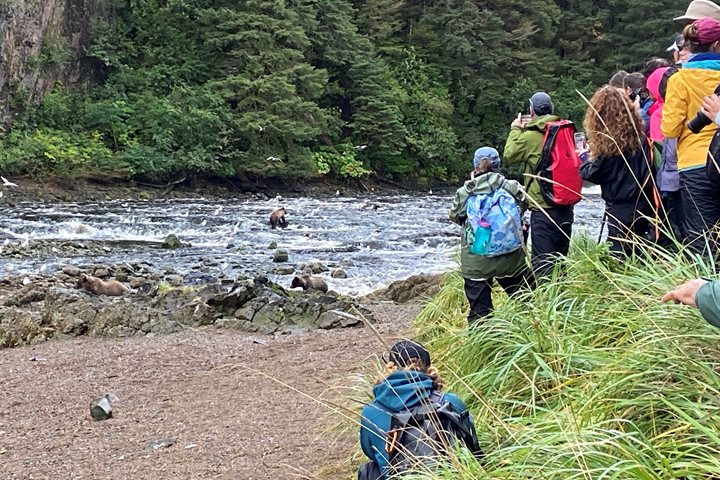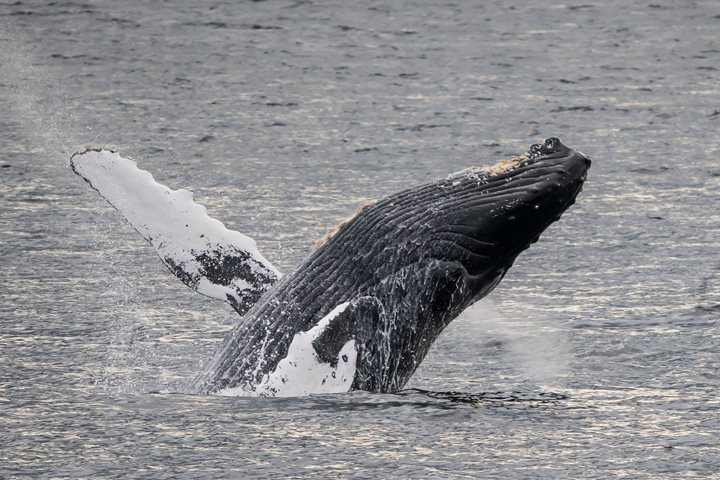There’s a place, famous among bears, on Chichagof Island’s eastern flank, where salmon gather, and are easy to catch. Salmon are rarely found in Southeast Alaska, coming only after long oceanic peregrinations. Often years old, they are wily, and prefer not to be eaten. But here and there, and just at certain times, they are easy prey. We visited just such a place to join the bears in greeting the salmon. We woke early, in time with tide. And there they were, scuttling through the shallows, salmon, intent on their life’s final chapter, and there they were, bears, fishing. We found a fine-looking sow, with a pair of cubs in tow. While diminutive, the cubs were hearty, and were tolerably good at fishing, though just a few months out of the den. As we watched, an adult bear arrived. This is often a cause for ursine alarm, but everybody—bears and humans—was pretty clam about the situation. Little doubt that these bears, if not friends, were well-acquainted. Later, a fifth bear joined the group. The recent arrivals fished with rather more sound and fury than efficaciousness. It seemed they had a thing or two to learn about salmon.
Later in the morning we walked over a nearby island. Southeast Alaska is wild, yet its thick forest often hides a complicated history. This island, like many others of its size, was once a fox farm. Silver fur from remote islands once embellished the shoulders of many a flapper before the Depression put an end to such extravagant frippery. Smothered in moss and fading into the forest, the remains of fashion-driven enterprise persist, but only gently. We walked past ruins and into the forest. The fishing bears might be happy here too, since we found huckleberries heavy with vermillion fruit. Later we saw toadstools, dangerously toxic, yet colorful as sunset.
Southbound, we were amazed to encounter yet another group of killer whales. While common in Southeast Alaska, killer whales are unpredictable, so we never know if we’ll see them. As we watched, Perry, our beloved engineer told us that he could hear the whales vocalizing through the hull. So we dropped our hydrophone and listened in. We heard the whales’ weird squeals—signature calls, each a cetalogical selfie—as well as the staccato clicks of echolocation.
Our day ended with a lecture by Andy Szabo. Dr. Szabo, a longtime friend, is an important whale researcher in Southeast Alaska, as well as a very fine public speaker. It was fun to hear of cutting-edge science by someone who is helping to drive it.







